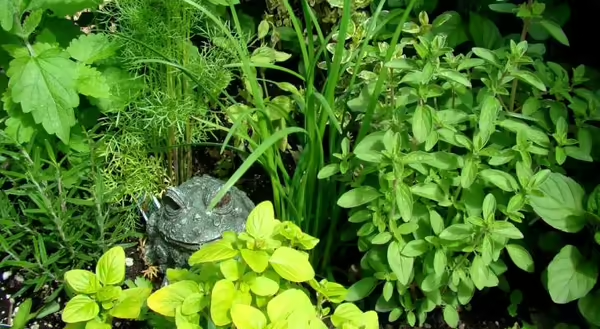
Spice up your life with a little spice in the garden. Historically used for culinary and fragrance purposes, herbs are both beautiful and versatile. In addition to the freshly harvested ingredients for our summer recipes, herb foliage and blooms offer the garden a variety of beautiful textures, shapes, scents, and colors. They are the perfect addition to a sensory garden, an area designed to stimulate one or more of the five senses: sight, smell, sound, taste, and touch. To appreciate their varied nature, plant herbs in a vegetable garden, incorporate them into a patio container or showcase them in your existing landscape.
Most of our culinary herbs are native to the Mediterranean and require certain conditions for optimal growth and flavor, including warm temperatures and well-drained soils. Many of them are drought-tolerant, once established, and very few have pest and disease problems. Most herbs are typically short, remaining under 1-foot tall. When planting, be mindful that most selections require at least 6 to 8 hours of full sun. Herbs are classified as annual, biennial, or perennial.
Annual herbs complete their lifecycle in one year. They are best planted by seed in the spring, either indoors or directly in the garden after the threat of frost has passed. These include basil, cilantro, dill, and fennel.
Biennial herbs complete their lifecycle over two years—year one is vegetative growth (foliage), year two is flowering, fruiting, and plant death. These include caraway and parsley.
Perennial herbs come back every year following the winter dieback (die to the ground) of the previous year's growth. They can be small woody shrubs or herbaceous plants. These include chives, lavender, lemon balm, lovage, oregano, sage, mint, and thyme. (Tip: If growing mint, plant it in a container to avoid it taking over the garden!)
Some herbs are also host plants (food sources) for the larval stage of butterflies. Parsley, dill, fennel, and caraway, all members of the carrot family (Apiaceae) are all host plants to the black swallowtail caterpillar. Caterpillar populations on a single plant do not tend to stress the plant so consider sharing your herbs with these munching diners. In return, your garden will become a butterfly haven.
This fall, before temperatures drop below freezing, bring a selection of herbs inside for the winter.
Some herbs that can be successfully overwintered indoors are rosemary, bay, lemon verbena, and scented geraniums. When bringing them indoors, inspect each plant carefully for signs of pests and diseases. Only bring healthy plants indoors. Treat them as you would any houseplant for the winter. Then, take them back outside when spring returns to enjoy fresh herbs straight from the garden.
PHOTO CREDIT: Herb Garden by Amanda Kae's Photoz is licensed under CC BY 2.0.
ABOUT THE AUTHOR: Brittnay Haag is a Horticulture Educator with University of Illinois Extension, serving Livingston, McLean, and Woodford Counties. Her work focuses on youth horticulture education, specifically through school gardens and Jr. Master Gardener programs. Brittnay provides leadership for three county Master Gardener programs and is responsible for developing community programs and providing expertise in horticulture and environmental sciences.